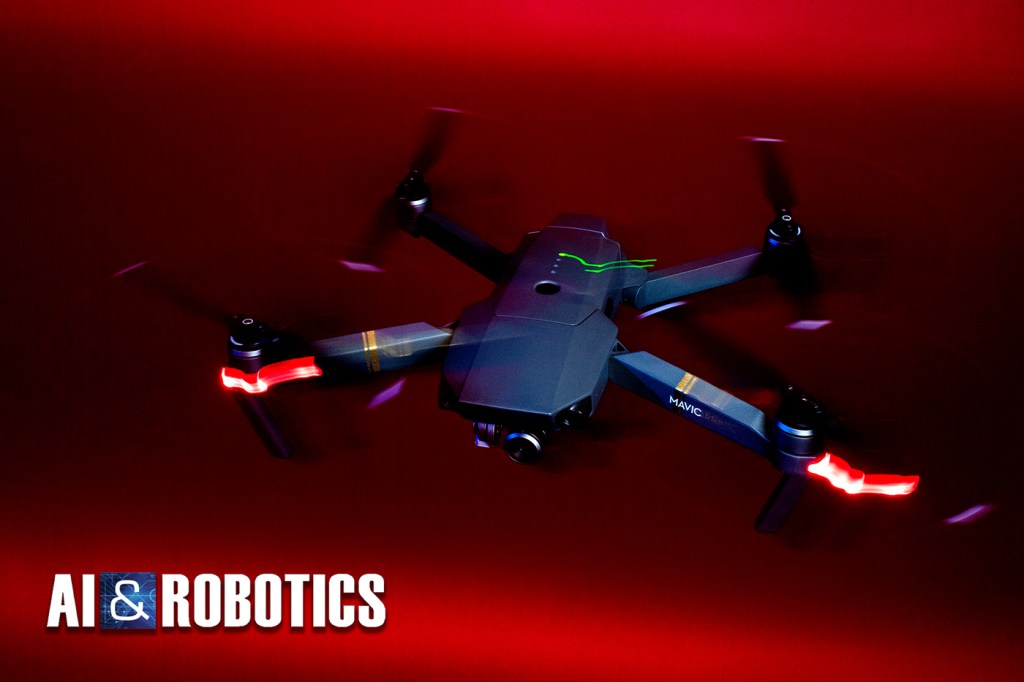In the sky, on the roads, and in the home: Robotics and AI in 2018

This story is part of our multi-part series looking at some of the big stories and bright ideas primed to make headlines in 2018.
Moore’s Law describes the exponential technological progress of computer chips. For the past 50 years, every 18 to 24 months, they have shrunk by about half in both size and cost. This enabled the creation of personal computers and cellphones—two devices that have become ubiquitous, which was unfathomable to the average person just 30 years ago.
Technology moves fast, and it’s not just computer chips. Rapid progress is being made in many fields, including robotics and artificial intelligence. Here, researchers at Northeastern with expertise in these areas share what trends they will be watching for in 2018.
Autonomous drones
Perhaps you’ve seen one fluttering through the sky—not quite a bird, not quite a plane. Unmanned aerial vehicles, commonly known as drones, are already used for a variety of tasks. Civilians deploy them to capture birds-eye-view photos and video footage. The military uses them to deliver goods, control crowds with tear gas, and even perform airstrikes.
“I expect that new applications for drones will continue to dominate the news,” said Taskin Padir, associate professor of electrical and computer engineering at Northeastern. One of Padir’s current projects is developing drones that scan for infrastructure damage to prevent further devastation after extreme events.
“I can imagine drones becoming more and more applicable in infrastructure inspection and maintenance, such as for pipelines, bridges, and highways, as well as crop monitoring in farmlands,” Padir said.
Hanumant Singh, professor of electrical and computer engineering, also cited drones as a technology to watch for in 2018. Singh works with drones of a different breed—autonomous underwater vehicles, including the first-ever to be deployed into the Antarctic Ocean during winter.
“One of the big themes for the next year will be the convergence of unmanned aerial systems and robotics with networking and the internet of things,” Singh said. The combination of these technologies, he explained, would allow for sophisticated drone control systems.
Of course, autonomous vehicles are also being developed for use on land. “We will see new features and capabilities on the self-driving cars front,” Padir said. He also cited an article by popular roboticist Rodney Brooks, who predicts that the first lane dedicated to driverless cars will be created no earlier than 2021.
Helper robots
If you’ve always wanted a “pet” robot, 2018 may be your year.
“One emerging trend is simple home robots—domestic assistants that are slightly more complex than an Amazon Echo and can move around the house,” said Robert Platt, assistant professor in the College of Computer and Information Science and an expert in machine learning and robot manipulation. “There are a number of companies working on these sorts of robots, hoping to break out,” he added. “One of them could succeed in 2018.”
As an example, Platt pointed to Kuri, a home robot being developed by Mayfield Robotics that’s reminiscent of a doe-eyed, miniature R2-D2. Kuri takes photos and video, plays music, responds to human touch, has voice recognition capabilities, and can navigate around the house autonomously. The company is selling the robot for $799 and expects shipments to begin this spring.
Another trend Platt is watching? Package handling for improved warehouse automation. “We’re getting to the point where robots can pack a box with your Amazon products, autonomously,” Platt said. For example, a company called RightHand Robotics has developed a robotic arm device that it claims to be “the future of e-commerce order fulfillment.”
Rifat Sipahi, associate professor of mechanical and industrial engineering, said another important trend is the need for seamless human-robot interaction, so that robots and artificial intelligence systems “can perform tasks in a synergistic manner with humans.”
“In my perspective, other than in some highly automated routine tasks, humans will still remain a centerpiece of handling complex tasks together with AI and robotics systems, but very likely the roles of humans will shift,” Sipahi said. “For this reason, effective and reliable human and AI-robotics systems integration will be one of the challenges of the future.”




